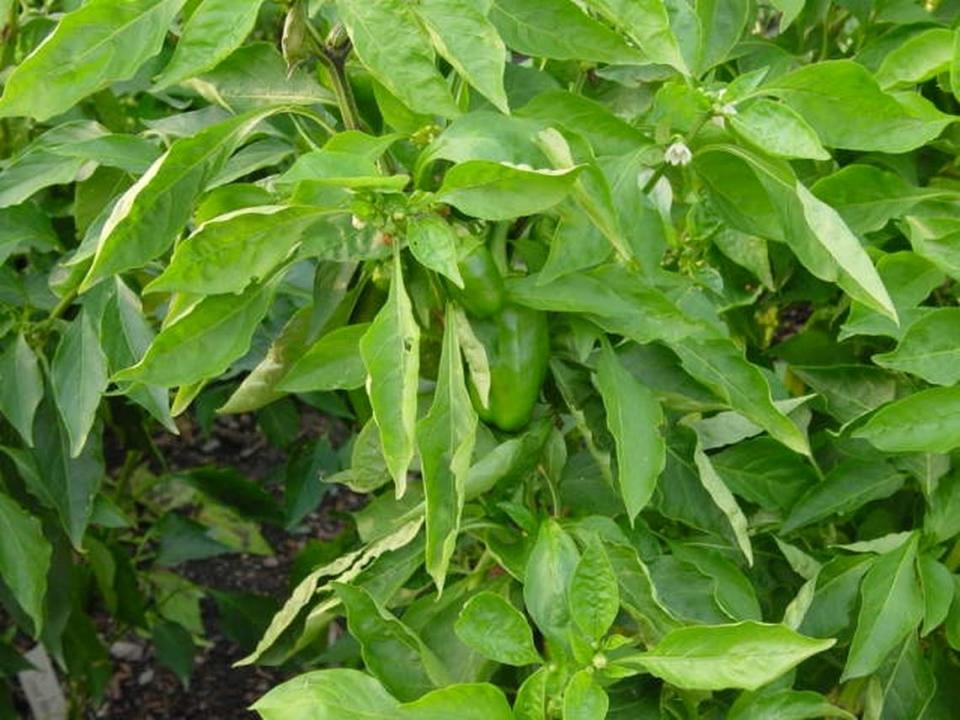Ready to pick a peck, pickled or not? Here’s how to grow peppers in garden, container
Whether sweet, mild or hot, peppers bring flavor to many dishes. For me, the hotter the better. If I am not sweating, the pepper is not fiery enough. Peppers are easy to grow in the garden or a patio container.
Peppers are classified as sweet or hot. Sweet peppers are larger. They can be blocky bell, banana or longer roasting types. Hot peppers vary in size, shape and degree of hotness, which is measured in Scoville heat units. Anaheim peppers are 1,000 units, while the ghost or Carolina Reaper measures 1.5 million units.
Plant in mid-May, as peppers require warm soil and air conditions. Air and soil temperatures should be consistently above 55 degrees. Exposure to cold temperatures delays growth, results in fruit drop and decreased yields.
Transplants or small plants will help you get a jump on the season. A healthy transplant with dark green foliage is about 4 to 6 inches tall.
Pepper plants need at least six hours a day of bright sunlight. Space the plants about 1 to 2 feet to provide plenty of light and room for growth. The container size for one plant should range from 3 to 5 gallons, and the soil should be about 14 inches deep. A 5-gallon bucket with drainage holes and a quality potting mix is ideal for one plant.
Peppers set fruit best with even moisture in well-drained soil. Inconsistent watering may contribute to blossom-end rot, a brown, leathery patch at the base of the fruit. Peppers require slightly more fertilization than tomatoes. Pepper fruit set will slow during hot summers.

Support or cages may not be necessary. However, heavy fruit or windy conditions can cause larger vines to break. Cages designed for tomatoes work well with peppers to support the plant if needed.
The fruit is ready for harvest when it reaches a desirable size and has firm, thick walls. Ripe peppers have a firm feeling when slightly squeezed. Regular harvests will increase fruit set and productivity. Carefully pick peppers to avoid breaking the plants. Cut the ripe pepper from the vine instead of pulling it off to avoid damaging the stem.
Harvest season starts in early to mid-summer, with the bulk of the harvest from late summer into fall. Be sure to pick all peppers before the first frost.
Harvest hot peppers with caution. Gloves might be a good idea. The oils that produce the heat can penetrate the skin and linger. Rubbing your eyes or other sensitive skin areas may cause a sting of heat and irritation if you are not careful.
Peppers, unlike tomatoes, have few insect and disease problems. Diseases are kept in check with proper watering. Insect issues are rare. The significant issues may be weather related.
A couple of plants should supply enough peppers for fresh use. Peppers freeze, so planting a few extra plants will provide for winter use.
Dennis Patton is a horticulture agent with Kansas State University Research and Extension. Need help? Contact the Johnson County Extension gardening hotline at 913-715-7050 or email garden.help@jocogov.org. The Kansas Garden Guide, your one-stop vegetable resource, has just been updated. Find your copy by going to ksre.k-state.edu and searching Kansas Garden Guide.

